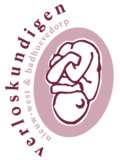You can have your unborn baby screened for certain abnormalities if you wish. This is known as prenatal testing or screening. You can screen for chromosomal and structural abnormalities using:
- NIPT
- ETSEO (13 weken echo)
- SEO (20 weken echo)
NIPT: Non-Invasive Prenatal TestThis test involves taking a blood sample from the pregnant person, which is used to check for chromosomal abnormalities (trisomy) such as Down syndrome, Edwards syndrome, and Patau syndrome. The blood sample can be taken from 10 weeks of pregnancy onwards. The placenta releases some genetic material into the mother’s bloodstream, which is then analysed. NIPT carries no risks. Since April 2023, NIPT is free of charge. If you choose to have this test, we will arrange it for you. You can decide whether you would like to receive results with or without additional findings. You will also be asked if you consent to the use of leftover material for research purposes. | SEO: Structural Ultrasound ExaminationThe Structural Ultrasound Examination, also known as the 20-week scan, is offered during pregnancy but is not mandatory. This scan can be performed between 18 and 22 weeks, with the ideal time being around 19 weeks. It is designed to detect physical abnormalities in the baby, such as spina bifida or a cleft skull. During this scan, the sonographer will examine all visible structures and organs of the baby. They will also measure the baby's growth and assess the amniotic fluid and placenta. The scan is covered by health insurance. During your first check-up the midwife will provide more information, and this topic will also be discussed during follow-up appointments. |
Consider different scenarios
It’s important to think about what you would do if the NIPT shows a trisomy indication. What would this result mean for you, and how would you approach follow-up testing?
- Learn more about the prenatale screening (in Dutch)
- Watch the NIPT information video
First Trimester SEO
The 13-week scan is a medical examination to detect physical abnormalities in the baby. It is similar to the 20-week scan, with the sonographer using ultrasound to check for physical anomalies such as issues with the skull, heart, abdomen, arms and legs, and spine. The placenta and amniotic fluid are also assessed.
At 13 weeks, the baby is smaller and less developed compared to the 20-week scan, so not all abnormalities can be detected. However, some serious issues can already be identified. The goal of the 13-week scan is to catch serious abnormalities early. It’s important to note that the absence of visible abnormalities doesn’t guarantee that the baby is completely healthy.
Examples of potential physical abnormalities
- Open skull
- Spina bifida
- Severe brain abnormalities
- Abdominal wall defects
- Severe facial deformities
- Heart defects
- Limb abnormalities
You can only opt for the 13-week scan if you participate in the scientific IMITAS study.



